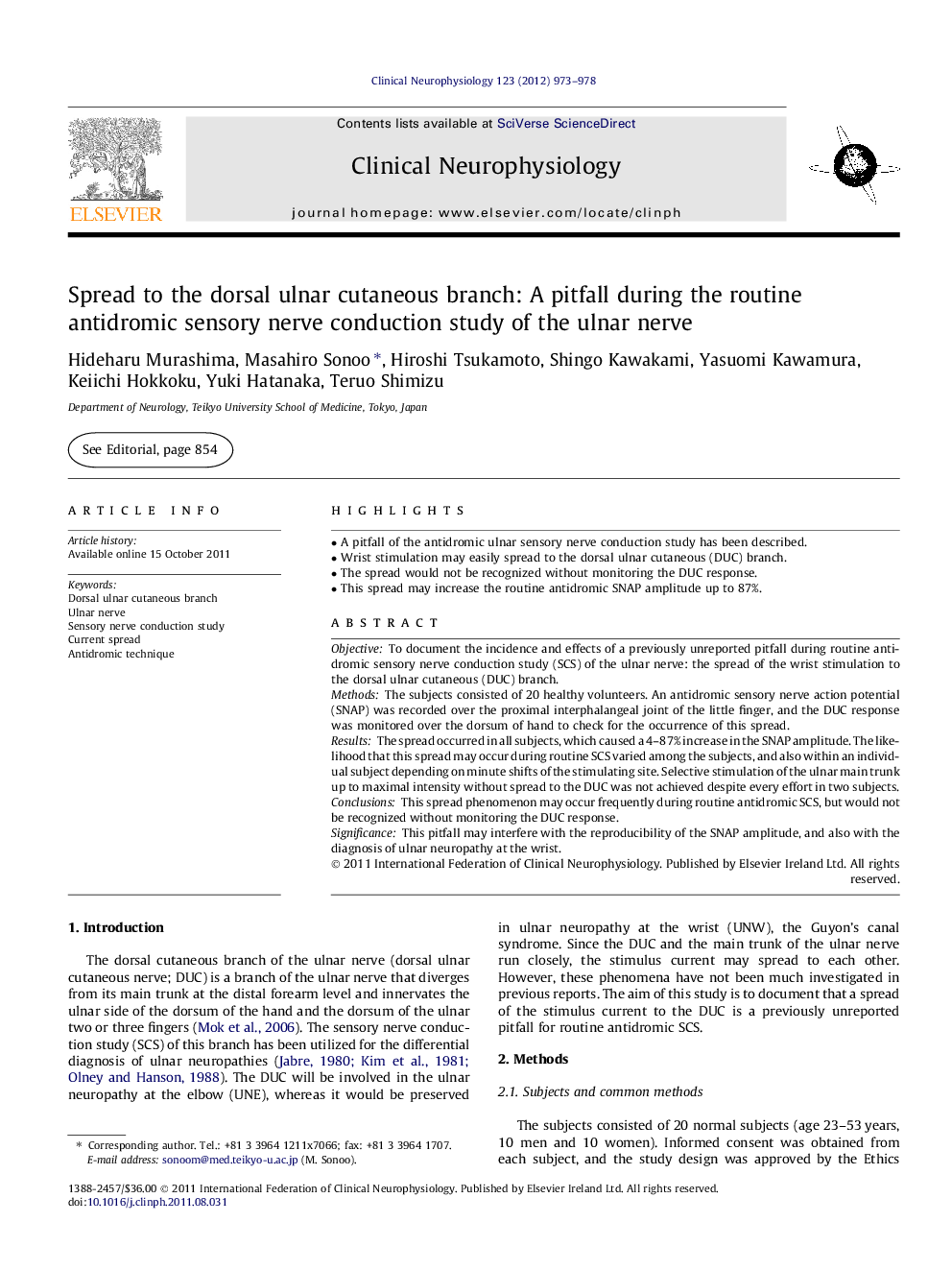| Article ID | Journal | Published Year | Pages | File Type |
|---|---|---|---|---|
| 3045290 | Clinical Neurophysiology | 2012 | 6 Pages |
ObjectiveTo document the incidence and effects of a previously unreported pitfall during routine antidromic sensory nerve conduction study (SCS) of the ulnar nerve: the spread of the wrist stimulation to the dorsal ulnar cutaneous (DUC) branch.MethodsThe subjects consisted of 20 healthy volunteers. An antidromic sensory nerve action potential (SNAP) was recorded over the proximal interphalangeal joint of the little finger, and the DUC response was monitored over the dorsum of hand to check for the occurrence of this spread.ResultsThe spread occurred in all subjects, which caused a 4–87% increase in the SNAP amplitude. The likelihood that this spread may occur during routine SCS varied among the subjects, and also within an individual subject depending on minute shifts of the stimulating site. Selective stimulation of the ulnar main trunk up to maximal intensity without spread to the DUC was not achieved despite every effort in two subjects.ConclusionsThis spread phenomenon may occur frequently during routine antidromic SCS, but would not be recognized without monitoring the DUC response.SignificanceThis pitfall may interfere with the reproducibility of the SNAP amplitude, and also with the diagnosis of ulnar neuropathy at the wrist.
► A pitfall of the antidromic ulnar sensory nerve conduction study has been described. ► Wrist stimulation may easily spread to the dorsal ulnar cutaneous (DUC) branch. ► The spread would not be recognized without monitoring the DUC response. ► This spread may increase the routine antidromic SNAP amplitude up to 87%.
